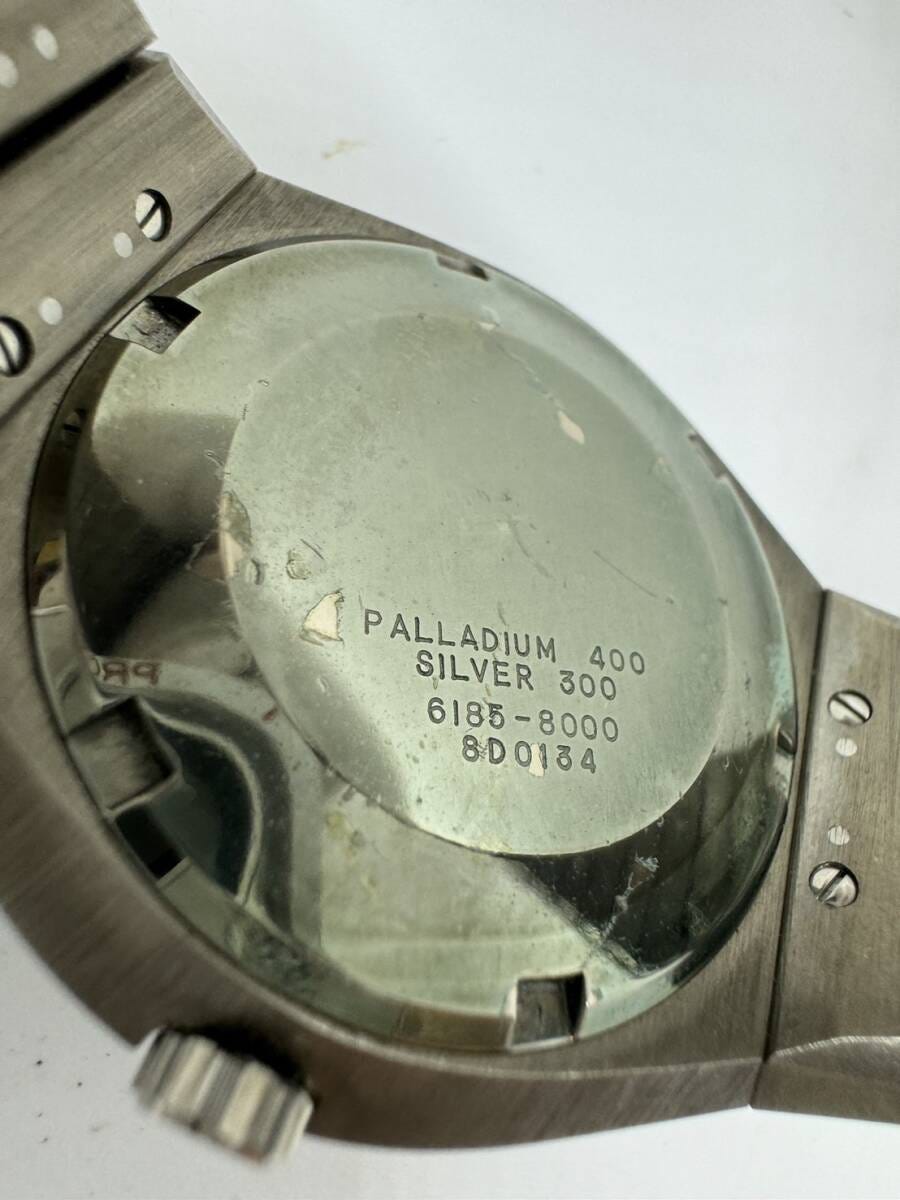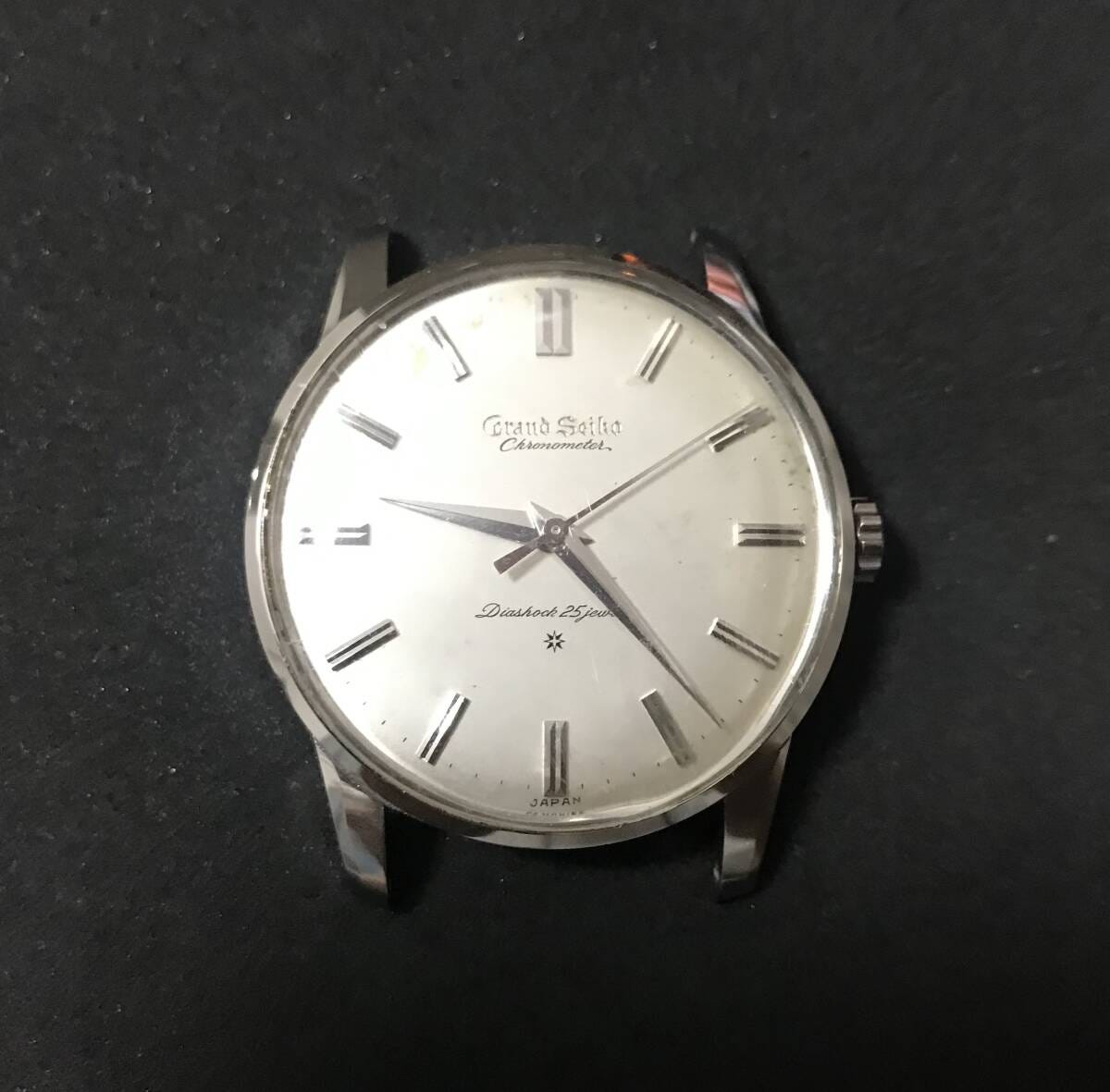Introduction
This week’s newsletter comes to you - a little later in the day than usual - from Japan! To be more precise, Osaka, where I’m basing myself for a few days before I head on to Tokyo by way of Nagoya and Suwa.
Our little world of vintage Grand Seiko is abuzz this week with the appearance on Yahoo Japan Auctions of a rather special piece that is headlining this week’s newsletter. Additionally, there is a rather fascinating “bad guy” featured this week.
Colt Seavers
Grand Seiko 6185-8000 VFA
There is really only one question regarding this watch, and that is of course, how much is it going to take to acquire it?
A 6185-8000 VFA is rare enough as it is, but to come across an example that looks to be pretty much unworn (its caseback protection sticker is almost completely intact, and - for what I believe is the first ever time on the secondary market - that remarkable bracelet has its full complement of links) is remarkable.
As a bonus - although with a piece this rare, and in this condition, I don’t think it will have any material impact on the price - the watch also comes with its original warranty, with the hand-written case serial number on the front cover naturally matching the one we find on the caseback.
One very interesting thing about the auction is that the seller has not put it on auto-extend. For the vast majority of auctions on Yahoo Japan, if there is a new bid in the final 5 minutes - regardless of whether or not that bid would turn out to be the winning bid or not - then the auction is extended for 5 minutes. I’ve seen auctions extend for literally hours past their original finish time due to this.
But here, there will be no extensions. Everyone is going to be forced into placing a bid that they believe will be sufficient to win the watch, in the final few seconds.
Place your bets in the comments or chat as to where you think it will land!
Grand Seiko 6246-9001
For once, if you’re getting a sense of deja vu here, it’s not actually the same watch that was featured last week. It is however from the same seller, and is in remarkably similar condition, so if you missed out on last week’s one, you can consider this a second chance!
Grand Seiko 6156-8020
The cap gold “Special” is a pretty rare watch - unsurprising really, considering it only ever appeared in the 1972 catalogues - and this one is in better condition than most that turn up.
The scratches on the hour hand are a little off-putting, but the dial looks to be in superb condition (that little mark to the right of “Hi-Beat” is actually on the crystal), and the case looks great. Remember that these cap gold cases were never as sharp as their stainless steel cousins in the first place, and whilst this one has probably had some gentle manual polishing over time, it remains about as sharp as you could ever hope to find.
Who is the bad guy in this movie?!
The first Grand Seiko with stainless steel case
To finally get around to answering the question I posed in the chat earlier in the week, what is different about this stainless steel cased first Grand Seiko compared to the junk this seller usually sells, is that this one would actually appear to have a legitimate dial.
What I mean by “would actually appear to have” is that there is nothing wrong with the printing of the dial text at all. But there is something very strange about it.
The current theory on the examples of stainless steel cased first Grand Seikos that have appeared with correct dials is that they were either demonstration pieces to show potential customers what the platinum watch would look like, or, that they started out their lives as platinum watches, but at some point in time suffered the ignominy of having their cases melted down for scrap metal value, and then were recased into steel cases at a later date.
What makes the dial on this example particularly odd though, is that it has a split-12 index.
On the regular filled gold references, the latest example of a watch I have found with a split-12 index dates from November 1960. Additionally, the earliest example of a platinum cased first Grand Seiko has a caseback serial number dating it to May 1961.
IF this dial originated in a platinum cased watch, then it means the platinum first GS originates from significantly earlier than previously thought.
If it doesn’t originate from a platinum cased watch, then where on earth is it from?
One thing that I am convinced about is that the case here is not legitimate. The reason is simple, in that it’s the same case design, with the same caseback medallion and internal stamping as multiple examples of complete faked SS firsts that have appeared in the past.
Which just leaves the movement, which, with its serial number of 128089, is way too late to accompany the dial - regardless of where the dial is from. So late in fact, that the movement probably originated in a watch that was cased up in 1963.
To cut a long story short, I am quite simply nonplussed by this dial, and cannot fathom how it came to be. Certainly in my mind the case, dial, and movement are all completely incompatible with one another, but beyond that, I’m frankly clueless!
Grand Seiko 5646-7010
A bizarre reprint. One would have hoped that whoever was responsible for this calamity would at least have known that this ain’t no Daini!
The first Grand Seiko with AD dial
One thing to highlight with this listing is that it actually looks like the dial is in really good shape. If you compare the first and last photos in the listing, you can use the parallax created from them being shot at different angles to determine that those rather obvious marks (below and to the right of the r in “Chronometer”, and between the 7 and 8 hour indices) are actually on the crystal.
But it’s the second photo that is the real puzzler -
What on earth is the movement from a Seiko Crown doing in there?!
Although this one is - quite rightly - in the naughty boys section, it would probably make for a potentially lucrative project for someone. The case - showing production in August 1963 - is correct for an AD dialed “First”, and so all you need is to find a late 3180 movement (with handset as well), and perform a little surgery.
Redone coloured dial summary
I close with the usual copy/pasted reminder to steer clear of any vintage Grand Seikos with coloured dials similar to the above. This is not a comprehensive photo - there are many references that get this “treatment”, so be careful out there.










![Ground Seiko J14070 14K GOLD Grand Seiko GS Watch Retro Antique [Junk] Ground Seiko J14070 14K GOLD Grand Seiko GS Watch Retro Antique [Junk]](https://substackcdn.com/image/fetch/$s_!krrC!,w_1456,c_limit,f_auto,q_auto:good,fl_progressive:steep/https%3A%2F%2Fsubstack-post-media.s3.amazonaws.com%2Fpublic%2Fimages%2Faf50724d-4f8f-4b53-98c6-dca57f3cdffe_1200x1200.jpeg)
![Ground Seiko J14070 14K GOLD Grand Seiko GS Watch Retro Antique [Junk] Ground Seiko J14070 14K GOLD Grand Seiko GS Watch Retro Antique [Junk]](https://substackcdn.com/image/fetch/$s_!ElbG!,w_1456,c_limit,f_auto,q_auto:good,fl_progressive:steep/https%3A%2F%2Fsubstack-post-media.s3.amazonaws.com%2Fpublic%2Fimages%2F9d1dcc53-f875-4b0c-9788-ff6a40025382_1200x1200.jpeg)
![Ground Seiko J14070 14K GOLD Grand Seiko GS Watch Retro Antique [Junk] Ground Seiko J14070 14K GOLD Grand Seiko GS Watch Retro Antique [Junk]](https://substackcdn.com/image/fetch/$s_!salR!,w_1456,c_limit,f_auto,q_auto:good,fl_progressive:steep/https%3A%2F%2Fsubstack-post-media.s3.amazonaws.com%2Fpublic%2Fimages%2F7dad08f0-be9a-4ce5-ade5-2fad4e548c62_1200x1200.jpeg)

Not looking good atm for the best offering of the year. If flush (oct I’m told) I’d shake’em out and sell it for half what I paid when I get that been there, done that feeling
Ok so now that auction has closed, I just wanted to address a few of the comments made regarding the 'challenges' of getting money to the proxy companies to bid on a watch.
Firstly, this newsletter went out with plenty of time to wire money to a proxy company (should that be your preferred way of doing this) and subsequently bid on the watch. I know from personal experience this week, that I was able to wire money from my Wise account to a dealer's account in Japan whilst sat with him discussing the watches in question. One of these transfers was for in excess of 1M Yen, and it wasn't necessary to do it using a Swift transfer. The money turned up in his account approximately 3 minutes after my instructing it.
If your bank is slower than this, and you want to be "agile" when it comes to moving money around to bid on watches on Yahoo Japan Auction, then perhaps consider setting up an account with a bank that is more efficient. But yes, I fully appreciate that there may well be some banks that simply cannot deposit cleared funds into a Japanese account (and indeed, some proxy companies that cannot process those funds) within 48 hours. So if you leave it late, and are using inefficient sources and destinations, I fully understand that there will be challenges. So change banks (and proxy companies if necessary) if this is important to you.
BUT.
Wiring money is not the only way to do this (and indeed, is not the most common way to fund big ticket auctions). By far the easiest way to get money into a proxy company in order to fund your bids on an auction is to simply charge your debit or credit cards. FromJapan (whose links I have always provided for viewing of featured auctions) will process a debit or credit card charge into your account with them in a matter of seconds. Yes, there is a limit of 1M yen. But guess what - you just have to make multiple deposits. If you (or your back, or your proxy company) are worried about KYC, then get it all organised as soon as you open the account so that every party knows who they are dealing with.
(Just to clarify - despite the fact that FromJapan have an affiliate program that would be simple to take advantage of, I have never participated in it. If you are happy with your proxy service of choice, then by all means continue to use them - I don't benefit in any way by sharing how FJ works in situations such as this.)